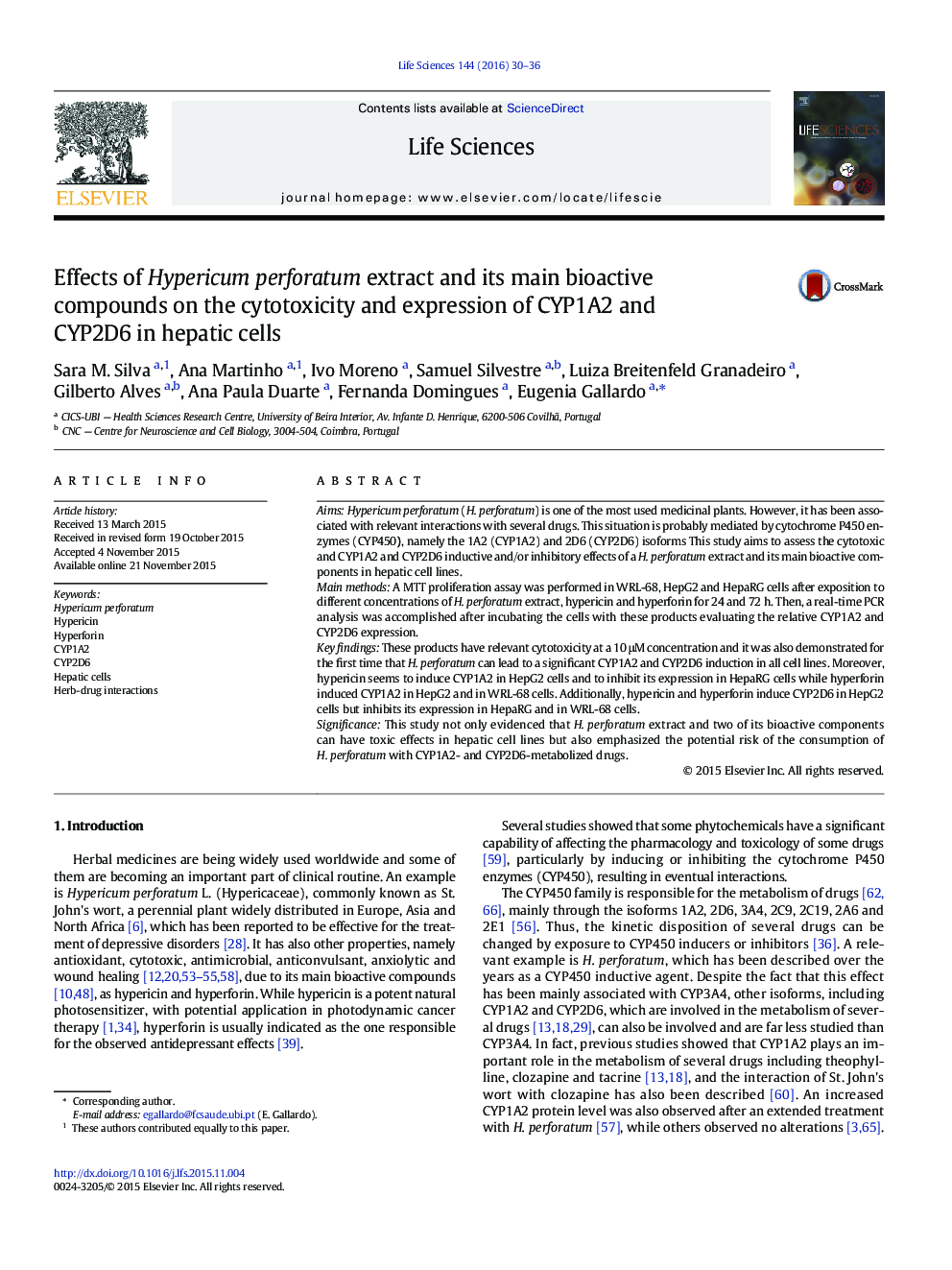| Article ID | Journal | Published Year | Pages | File Type |
|---|---|---|---|---|
| 2550605 | Life Sciences | 2016 | 7 Pages |
AimsHypericum perforatum (H. perforatum) is one of the most used medicinal plants. However, it has been associated with relevant interactions with several drugs. This situation is probably mediated by cytochrome P450 enzymes (CYP450), namely the 1A2 (CYP1A2) and 2D6 (CYP2D6) isoforms This study aims to assess the cytotoxic and CYP1A2 and CYP2D6 inductive and/or inhibitory effects of a H. perforatum extract and its main bioactive components in hepatic cell lines.Main methodsA MTT proliferation assay was performed in WRL-68, HepG2 and HepaRG cells after exposition to different concentrations of H. perforatum extract, hypericin and hyperforin for 24 and 72 h. Then, a real-time PCR analysis was accomplished after incubating the cells with these products evaluating the relative CYP1A2 and CYP2D6 expression.Key findingsThese products have relevant cytotoxicity at a 10 μM concentration and it was also demonstrated for the first time that H. perforatum can lead to a significant CYP1A2 and CYP2D6 induction in all cell lines. Moreover, hypericin seems to induce CYP1A2 in HepG2 cells and to inhibit its expression in HepaRG cells while hyperforin induced CYP1A2 in HepG2 and in WRL-68 cells. Additionally, hypericin and hyperforin induce CYP2D6 in HepG2 cells but inhibits its expression in HepaRG and in WRL-68 cells.SignificanceThis study not only evidenced that H. perforatum extract and two of its bioactive components can have toxic effects in hepatic cell lines but also emphasized the potential risk of the consumption of H. perforatum with CYP1A2- and CYP2D6-metabolized drugs.
